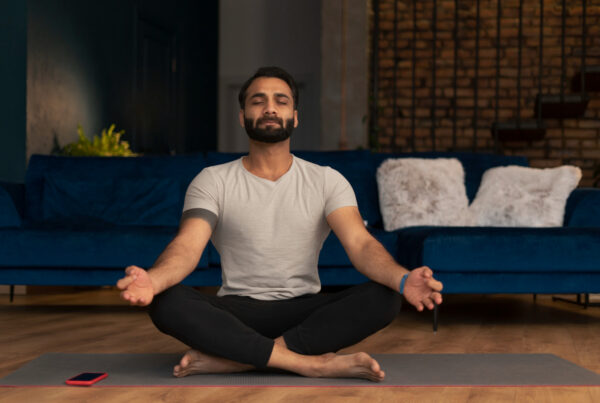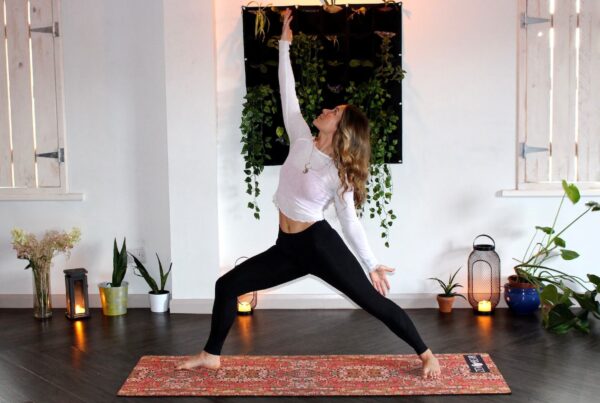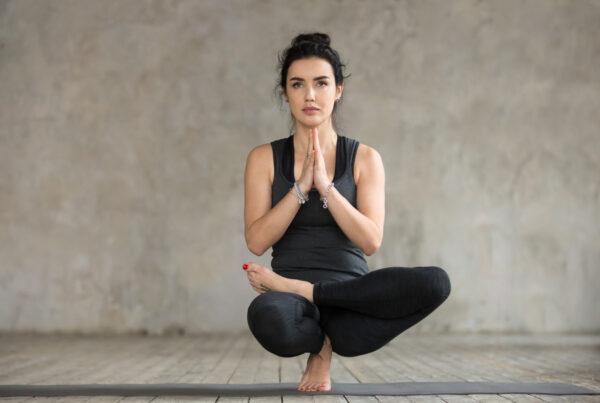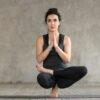Yoga is an ancient technique that began in India and has been around for thousands of years. Asanas, breathing exercises, meditation, and philosophical ideas are all included in an all-encompassing approach to health and wellness. Yoga induces improved balance, flexibility, and strength as well as a reduction in stress, anxiety, and sadness.
Yoga has also been demonstrated to strengthen immunity, lower inflammation, and improve cardiovascular health. Yoga is a fantastic exercise to improve flexibility, and there are many poses that might help.
There are numerous variations of yoga poses for flexibility. Here are some flexible yoga poses:
- AdhoMukhaSvanasana:- often known as the downward-facing dog, is a fundamental yoga pose that stretches the hamstrings, calves, and spine. On all fours, lift your hips up and back. Tuck your toes beneath. When you lengthen your spine, press your palms firmly into the mat and extend your arms and legs.
- Trikonasana:-Hamstrings, hips, and spine are stretched in the Triangle Pose (Trikonasana). Step your feet apart as you stand, turn your right foot out, and spread your arms to the sides. As you raise your left arm up towards the ceiling, reach your right hand down towards your right foot.
- The Warrior II Pose (Virabhadrasana II):- It stretches the hips and groin while strengthening the legs. Step your feet apart while standing, pointing your right foot out, and bending your right knee. Look over your right hand while spreading your arms out to the sides.
- The standing forward fold (Uttanasana) stretches the lower back and hamstrings. Start from a standing stance, bend forward at the hips, and let your head drop limply.
- Seated Forward Bend (Paschimottanasana):- This position stretches the spine, hamstrings, and calves as well as the entire back of the body. Reach forward towards your feet while seated on the mat with your legs out in front of you.
- PrasaritaPadottanasana (Wide-Legged Forward Bend):- It stretches the hamstrings, inner thighs, and groin. Standing with your feet wide apart, stretch your hands towards the mat while hinging forward at the hips.
- Head-to-knee pose (Janu Sirsasana):- The hamstrings and inner thighs are stretched in the head-to-knee pose). Bring one foot to your inner thigh as you sit on the mat with your legs out in front of you. Reach out to touch your raised foot.
- UpavisthaKonasana:- It is also known as the seated wide-legged straddle, which extends the inner thighs and hips. Your hands should be stretched towards your feet while you sit on the carpet with your legs spread wide apart.
- Gomukhasana:- Also known as the Cow Face Pose, stretches the shoulders, hips, and thighs. Cross one leg over the other while sitting and stack your knees.
- ArdhaMatsyendrasana:- Also known as the Half Lord of the Fishes Pose, stretches the hips, thighs, and spine. Bring one foot to the opposite hip while seated and cross the other leg over it. Aim your turn towards the bowed knee.
What are the best yoga poses for increasing flexibility in the hips and legs?
There are a number of yoga poses for flexibility that is especially good for boosting leg and hip flexibility. Here are a few of the most effective yoga poses for this goal:
- Pigeon Pose (Eka Pada Rajakapotasana): This pose addresses the glutes, outer thighs, and hip flexors and is a profound hip opening. Also, it is a fantastic technique to reduce lower back stress.
- PrasaritaPadottanasana: Also known as the wide-legged forward bend, increases hip and lower back flexibility while stretching the hamstrings, inner thighs, and groin.
- Garland Pose (Malasana): This posture increases ankle and knee flexibility while stretching the hip and groin.
- Frog Position (Mandukasana): This posture targets the hip flexors, outer thighs, and groin and is a profound hip opening. It can be difficult, so go carefully and pay attention to your body.
- Seated Forward Bend (Paschimottanasana): This position stretches the spine, hamstrings, and calves as well as the entire back of the body. Also, it’s a great technique to reduce shoulder and neck strain.
Remember to perform these postures frequently and pay attention to your body as you try to become more flexible. You will see major increases in flexibility and general well-being over time.
How often should I practice yoga poses for flexibility to see results?
Your present level of flexibility, your fitness objectives, and your schedule are just a few of the variables that will determine how frequently you practice yoga poses for flexibility.
- To achieve results, it’s typically advised for novices to practice yoga at least three to four times per week. However, practicing yoga 5-7 times a week might be better suitable for those who are already flexible or have a more advanced practice.
- Flexibility can be increased through consistency. Even only 10 to 15 minutes a day of consistent yoga practice will help you realize improvements over time. Instead of overextending yourself and eventually burning out, it is preferable to develop a regular and sustainable practice.
- It’s crucial to approach the practice with patience and concentration when doing yoga poses for flexibility. Pushing oneself too hard can result in injury, so pay attention to your body and avoid doing so. Instead of racing through postures, it is preferable to take your time and gradually focus on improving your flexibility.
- Doing additional stretching exercises in addition to a regular yoga practice might be beneficial. Stretching, foam rolling, and other low-impact exercises can assist to enhance the range of motion and loosen up tight muscles.
- It’s crucial to keep in mind that every person’s body is unique and that numerous factors will affect how quickly you experience results. Yet, one can anticipate seeing major advancements in one’s flexibility and a general sense of well-being with consistent practice and patience.
Conclusion
It’s crucial to warm up before doing yoga, especially if you want to increase your flexibility. To prevent any damage, always pay attention to your body and alter yoga poses as needed. Ultimately, yoga poses for flexibility are an essential component of a well-rounded fitness regimen that can benefit both the body and the mind.










